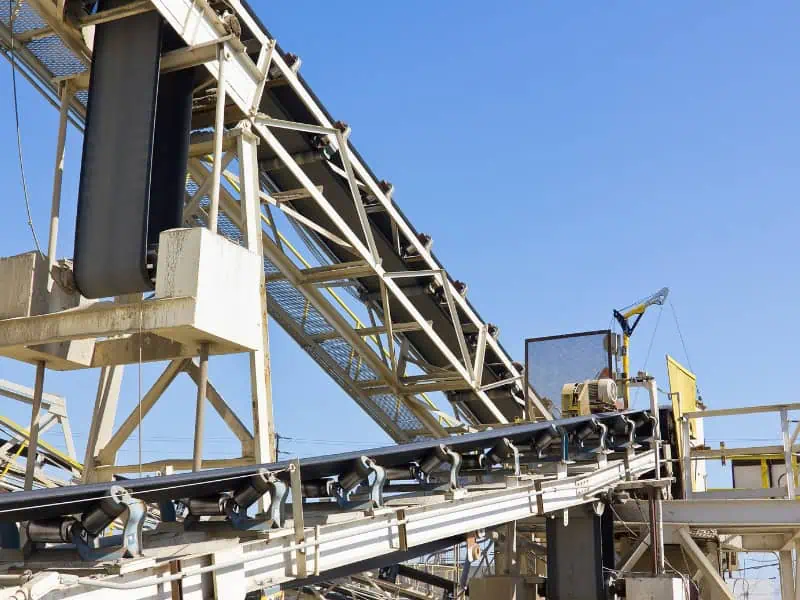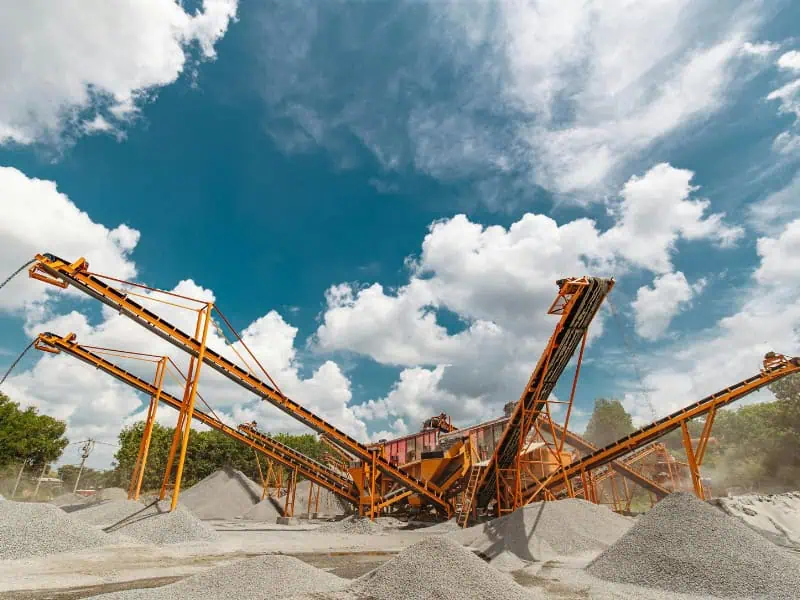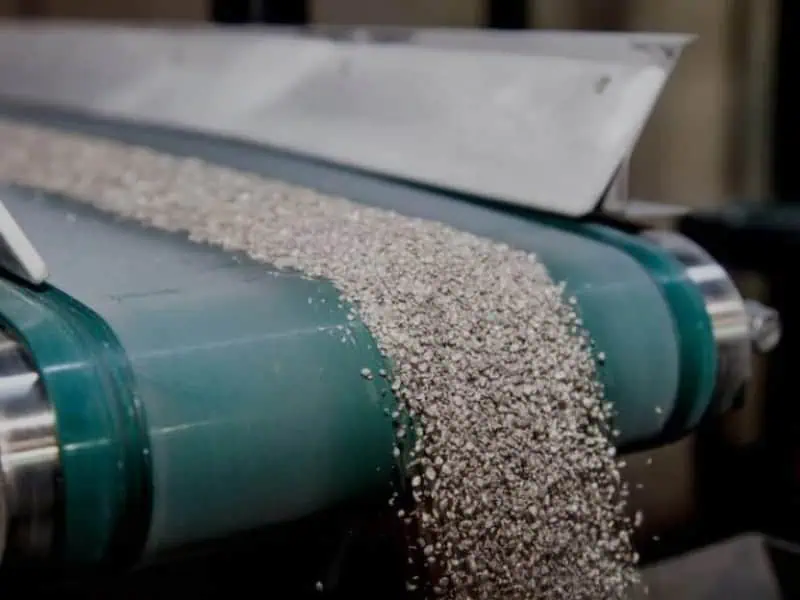For heavy-duty work, the belt that consistently stands up to abuse is a steel-reinforced rubber construction conveyor belt with thick abrasion-resistant covers and optional chevrons for steeper grades. Because sites vary wildly, the best option balances material type, tonnes per hour, incline, and operating environment to maintain flow without excess wear. With careful sizing, the right accessories, and disciplined upkeep, conveyor belt systems deliver safe, predictable output on tight programs—no dramas. This article distils materials, sizing rules, accessories, maintenance, and hire timing so you can match a setup to real site demands.
How does a construction conveyor belt improve efficiency on building sites?
A construction conveyor belt improves efficiency by creating a continuous, predictable flow that reduces manual handling and minimises downtime across the program. Because it replaces ad-hoc moves with steady throughput, crews stay on the tools while the plant feeds the line at controlled rates. Moreover, modular frames link levels and reduce risky hand-offs, which keeps the job humming even when access is tight. Here are the efficiency benefits:
- Flow control: The belt width and speed are aligned with feed rates to prevent choking and surges.
- Labour redeployment: Operators shift from hauling to higher-value tasks, cutting idle time.
- Spillage reduction: Skirting and scrapers limit mess, making cleanup faster and safer.
- Logistics smoothing: Consistent discharge timing helps synchronise pours and stockpiles.
- Noise moderation: Wider belts at lower speeds reduce neighbourhood impacts.
When you need higher duty cycles and abrasive load tolerance, step up to heavy-duty construction conveyor belt systems mid-project to stabilise tonnage without over-spec’ing from day one. In practice, that flexibility keeps schedules on track and supports staged ramps as production targets rise.
What construction conveyor materials perform best under extreme site conditions?

Elevated conveyors feeding plant across steel gantries
Under extreme conditions, abrasion-resistant rubber with nitrile options for oils and heat-rated compounds near asphalt or curing zones—backed by steel-cord or multi-ply fabric—delivers durable performance. Because sharp aggregates and demolition spoil can cause severe damage, thicker top covers and robust reinforcements protect against cuts and impacts. Meanwhile, Chevron profiles improve grip on damp inclines, although they increase friction and power draw, which must be considered when selecting a drive. Here are the material tips:
- Abrasion covers: Thicker rubber top covers resist gouging from sharp rock for greater wear resistance.
- Oil tolerance: Nitrile compounds maintain integrity when exposed to fines carrying diesel, oils, or solvents.
- Heat zones: Heat-resistant blends reduce glazing, cracking, and premature hardening near hot materials.
- Profiles: Chevron or cleated surfaces enhance traction on slopes and wet fine soils.
- Corrosion control: Zinc-plated frames and stainless steel fixings withstand salt air and corrosives.
For a deeper dive into compound trade-offs and reinforcement choices, explore advanced conveyor belt types for construction to align cover grade, carcass strength, and profile with your actual loading and drop heights. In doing so, you’ll maintain a balance between durability and power demand across shifts.
How do you size a conveyor system for load, distance, and incline?
You size a conveyor belt system by setting a target tonnage per hour, choosing a belt width and speed that can carry the volume, and matching motor power to the total length, friction, and incline. Because feed consistency and hopper design influence spillage, capacity calculations should include surge factors and transfer losses. Furthermore, site geometry—turns, levels, and ground bearing—dictates module lengths and stand spacing. Here are the key parameters (for planning and tender scoping):
| Parameter | Typical options | Notes |
| Belt widths | 300–600 mm | 450 mm common for spoil; 600 mm for higher volume |
| Speeds | 0.6–1.6 m/s | Start lower to control spillage; increase with a steady feed |
| Incline | 0–24° (smooth) / up to 35° (chevron) | Higher angles need profiles and grunt |
| Drive power | 1.5–7.5 kW per module | Depends on length, load, and angle |
| Frame length | 3–10 m modules | Chain modules to span the distance and staging |
Here are the sizing takeaways:
- Width and speed: Wider belts at lower speed control spillage and noise on dense jobs.
- Incline needs: Cleated or chevron profiles handle steeper grades and damp fines.
- Power reality: Drive demand rises with speed and angle, risking higher power consumption if over-sped.
- Hopper design: Controlled feed reduces ploughing and wear at the loading zone.
- Footings: Check ground bearing and brace frames to limit vibration.
With realistic surge allowances and careful module selection, conveyor belt systems maintain flow without flogging motors. As a result, output stays predictable and maintenance windows are easier to plan—she’ll be right.
Which conveyor belt accessories enhance performance and safety?
The accessories that most enhance performance and safety are skirting and scrapers for spillage control, impact beds for shock absorption, variable speed drives for flow tuning, and comprehensive guarding with pull-cord E-stops. Here are the key accessories:
- Skirting: Rubber or urethane skirts seal the loading zone and cut edge spillage.
- Primary/secondary scrapers: Blade sets clean the return and keep fines off rollers.
- Impact beds: Energy-absorbing bars protect covers at drop points and reduce bounce.
- VSDs: Variable speed drives trim flow to match feed variability and downstream capacity.
- Noise-reduction idlers: Low-noise bearings and lagging reduce environmental impacts.
Together, these add-ons keep the run tidy and safe, especially when shifts are flat out, in line with equipment safety obligations for construction workers. By pairing housekeeping controls with engineered safeguards, the belt works harder for longer without surprises.
What maintenance practices extend the life of a construction conveyor belt?
The practices that extend belt life are disciplined prestarts, correct tensioning and tracking, timely component replacement, regular cleaning, and targeted lubrication. Because minor issues quickly snowball, early intervention on idlers, skirts, and scrapers prevents edge wear and carryback. In wet seasons, sealed bearings and water-resistant greases hold up better, while clear return runs stop fines from building under frames. Here are maintenance priorities:
- Daily prestarts: Inspect tracking, scraper condition, idler spin, and pull-cord function for simpler maintenance routines.
- Tension and alignment: Set correctly to prevent heat, edge fray, and drift.
- Cleaning: Remove carryback, vacuum transfer points, and sweep spill zones.
- Planned spares: Hold rollers, scraper blades, and belt clips to avoid lengthy stoppages.
- Operator practices: Start under low load, ramp speed, and monitor vibration and temperature.
By making checks habitual and parts readily available, uptime increases and costs decrease as conveyor safety and maintenance practices in construction become established. Over time, predictable service windows help plan labour, reduce rework, and keep production steady—no worries.
When is hiring a construction conveyor belt the most practical option for your project?

Hiring is most practical when utilisation is seasonal, access is challenging, the scope is short-term, or a live pilot is required before incurring capital expenditure. Because programs surge and ease, conveyor belt hire scales fleet size to match the schedule. Here are signs that Hire is the better fit:
- Variable utilisation: Temporary digs and shutdowns need a flexible fleet size.
- Capital exposure: Hire avoids increased upfront cost while preserving options.
- Speed to site: Ready-to-run modules compress mobilisation and training time.
- Compliance currency: Newer models arrive with up-to-date guards and E-stops.
- Trial capability: Test widths, profiles, and drives on live material before buying.
By proving the configuration on site, decisions about ownership are grounded in reality. If the pilot meets throughput and housekeeping targets, scaling is straightforward and risk stays low.
Final thoughts
Choosing the right belt means matching compound and reinforcement to the material, sizing width and speed to the target tonnes per hour, and adding accessories that stabilise flow without complicating service; if your program is short or variable, trial a hire configuration and then lock in a longer-term plan, or find out how Conveying & Hoisting Solutions can assist your construction team to align equipment with site access, duty cycle, and schedule while keeping operations tidy and compliant.




